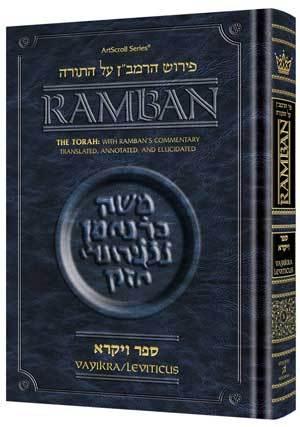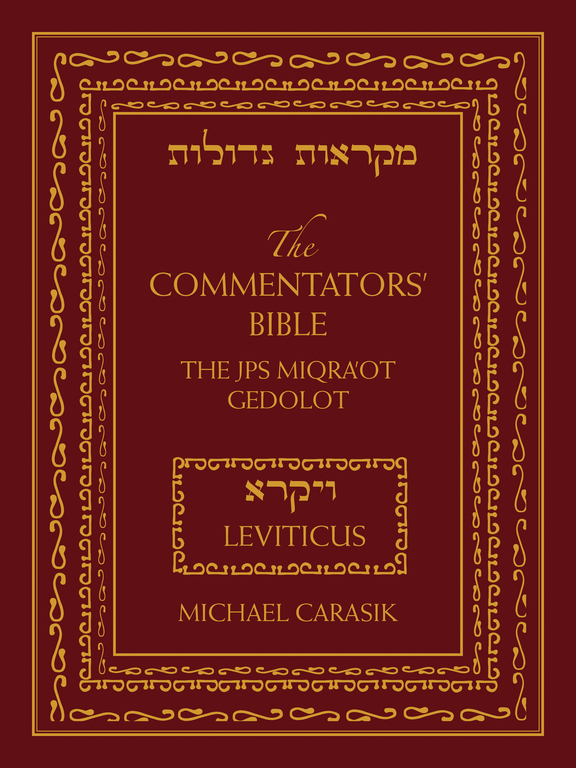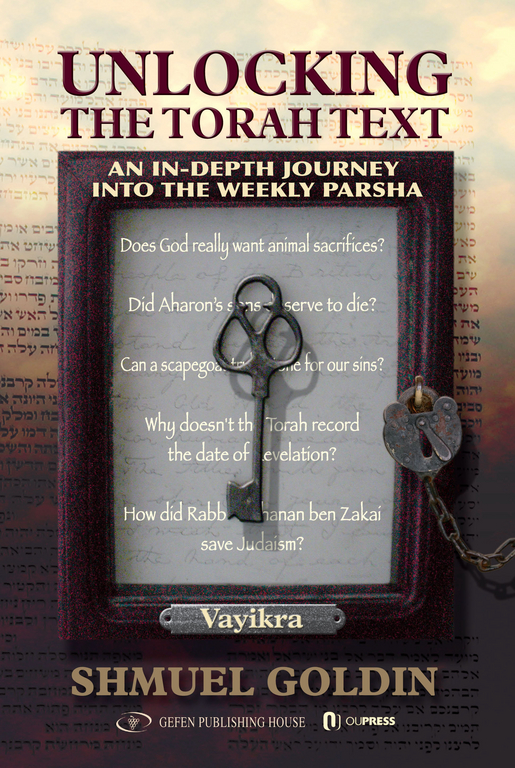The Kosher Bookworm: Leviticus the book
by Alan Jay Gerber
Issue of April 18, 2010/ 2 Iyur, 5770 It stands proudly at the middle of the Chumash - the third of five volumes. It is the least historical; it is top-heavy with mitzvos dealing with sacrificial and ethical issues and widely considered to be the most difficult book of the Torah to translate and comment upon. Yet, commentators remain undaunted, and year after year new ones tackle the complicated issues found within Leviticus, better known as Vayikra.“Unlocking The Torah Text — Vayikra” by Rabbi Shmuel Goldin (Gefen Publishing House, 2010) is the third volume in a series now co-sponsored by The Orthodox Union.This is not a simple book to read. With that said, let me also state that this sefer is a very valued addition to the works dealing with Vayikra. Each parsha is organized into three to five separate segments. These are then broken down into subsections dealing with context, questions, approaches, and points to ponder. The complex organization takes a while to get used to, but readers will soon see the value to this organizational madness.
The richness of this book is easily appreciated when one beholds how Rabbi Goldin handles classical Leviticus topics such as the mystery of disease in ritual law, the need for the scapegoat in the Jewish tradition, the rationales of kashruth, as well as the numerous laws dealing with morality and inter-personal relations that have come to impact not only Jewish law, but to define most western jurisprudence.
Yes, as the author notes in his introduction, Leviticus can be a challenge, but Rabbi Goldin rises to the challenge, and this book is worth the challenge of your attention. Check out the chapter dealing with financial oppression, “ona’at mammon” — not only will you learn some Torah, but you’ll come out of the experience more proud of your faith and people.
With Vayikra, Artscroll has completed its now classical treatment of Nachmanides, the Ramban’s Commentary on the Chumash into the English language. This work is enhanced with annotations and elucidated sections that help the reader better understand the meanings behind the Ramban’s commentary.
With the conclusion of this series it would be appropriate for me to note, with reverence and veneration, Rabbi Charles B. Chavel, of blessed memory, who was the first to pioneer the English translation of the works of the Ramban. Without his efforts the current work would not have been possible. T’hei zichro baruch.
Also, speaking of Artscroll, one should note the latest volume just released in the “Aleinu L’shabei’ach” series, this one dealing with...Vayikra. How timely and how wonderful. This series has deservingly taken off and I anticipate that the English incarnation of the entire series will see its conclusion by Elul.
When writing about chumash commentaries, the role that Mikra’ot Gedolot has played through the years is incalculable. Given the complicated nature of this multi-commentator work, it should come as no surprise that it has taken so long for the Book of Leviticus to be published. Thus, I am happy to announce the publication by The Jewish Publication Society of the Leviticus volume of its “The Commentators’ Bible” series, edited, translated and annotated by Dr. Michael Carasik.
As with the original, this work includes, in awesome translation, the following classical commentators: Rashi, Ramban, Rashbam, Ibn Ezra, Abarbanel, the Bechor Shor, Kimchi, Chizkuni, and the Sforno.
As if this were not enough, consider that nearly every page includes a section of additional notes that help further explain the original, when needed.
This book represents the second in the series, the previous being Exodus issued some years ago. This sefer was worth the wait. To Dr. Carasik, a hearty yashar ko’ach. I look forward to the successful conclusion of this work.
I would like to conclude with mention of another English rendition of a commentator classic, this time, “Onkelos on the Torah - Leviticus” [Gefen Publishing House, 2008] by Rabbi Dr. Israel Drazin and Rabbi Stanley M. Wagner.
This series was previously reviewed. Its increasing popularity has made it a classic in many shuls of all denominations. The Orthodox Union has adapted this series to its study program of Onkelos/Targum for the weekly parsha. The OU could not have chosen a better instrument for their learning program. The series is both lucid and well organized for both the scholar and layman to learn from, with “ease and nachas.”
Hopefully, in the near future, both the United Synagogue and the Hebrew Union will come to appreciate this work and adopt it to their educational needs. Thus, all of American Jewry will then come to benefit from the unique scholarship of Targum Onkelos.

 50.0°,
Partly Cloudy
50.0°,
Partly Cloudy 









